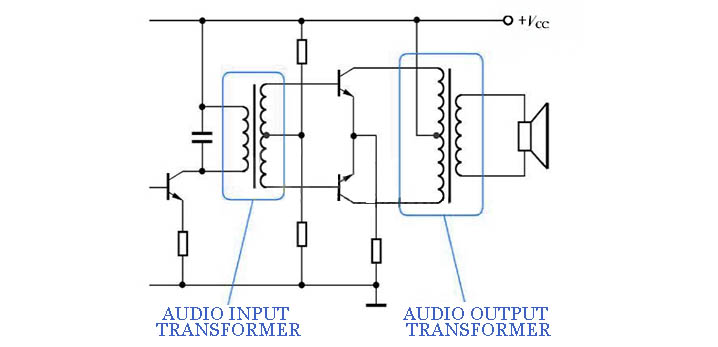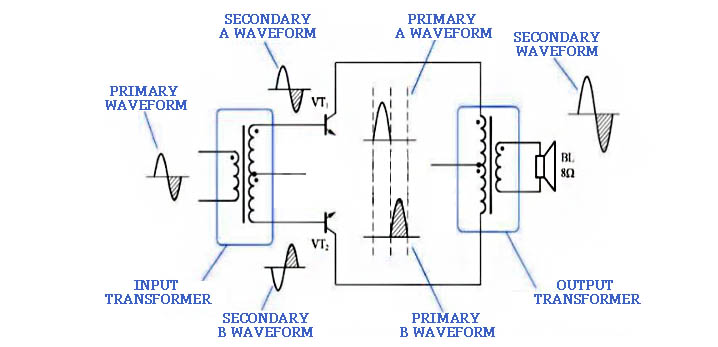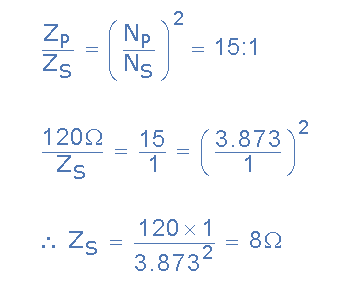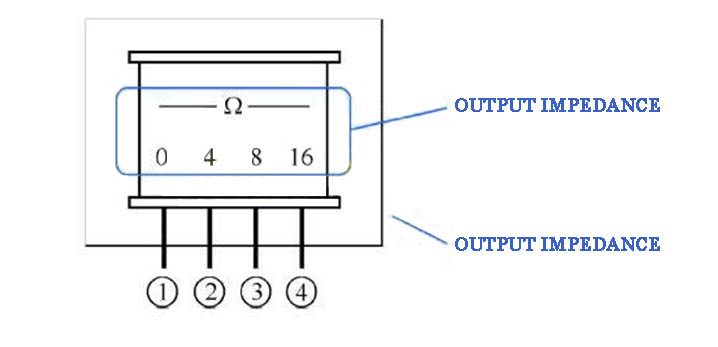First of all, the audio transformer can be understood literally as a transformer working in the audio range. The audio transformer can convert the voltage like a power transformer and can achieve audio model coupling. Due to some characteristics of the product itself, it is not recommended to use it in high-quality audio amplifiers.

The input transformer and output transformer in the push-pull power amplifier are both audio transformers. As shown in the figure above, the line transformer in the limited broadcast is an audio transformer. The two important parameters of the audio transformer are impedance ratio and power
1.Audio Transformer Impedance Ratio
Where ZP is the primary winding impedance, ZS is the secondary winding impedance, (NP/NS) is the transformer turns ratio, and (VP/VS) is the transformer voltage ratio.
For example, an impedance-matched audio transformer with a turns ratio (or voltage ratio) of 2:1 has an impedance ratio of 4:1.
Audio transformers with a turns ratio of 15:1 are used to match the output of a power amplifier to a loudspeaker. If the output impedance of the amplifier is 120Ω, calculate the nominal speaker impedance required for maximum power transfer.
The power amplifier can then effectively drive an 8 Ohm speaker.
How important is the audio transformer to the sound quality?
In many audio equipment, the audio transformer is a very important factor, which plays an important role in regulating voltage and current. Once these factors change, the sound quality will be affected. Series, so the audio transformer will have a great impact on the sound quality.
The quality of the audio transformer directly affects the stability of the equipment. An unstable audio transformer at work will have a great impact on the sound quality of the equipment, among which noise and electromagnetic interference are the main expressions.
The impedance ratio between the primary and secondary of the high-frequency transformer. As shown in the figure, the secondary impedance of a transformer is directly marked on the transformer.
The maximum power that the transformer can withstand during normal operation is generally not considered in crystal radios. In tube amplifiers and limited broadcast systems, you must pay attention to the power of the transformer. In high-fidelity audio, you must also consider the frequency response index of the high-frequency transformer.
There are two main uses for audio transformers: impedance matching, signal transmission and distribution.
1. Impedance Matching Transformer
One of the main applications of audio transformers is impedance matching. Audio transformers are great for balancing amplifiers and loads with different input/output impedances together for maximum power transfer. For example, typical speaker impedances range from 4 to 16 ohms, while the impedance of a transistor amplifier output stage can be several hundred ohms. A typical example is the LT700 audio transformer, which can be used in the output stage of an amplifier to drive a speaker.
We know that for a transformer, the ratio of the number of turns on the primary winding (NP) to the number of turns on the secondary winding (NS) is called the “turns ratio.” Since the amount of voltage induced in each coil turn of both windings is the same, the primary to secondary voltage ratio (VP/VS) will be the same as the turns ratio.
Impedance matching audio transformers always give the impedance ratio value from one winding to the other by the square of their turns ratio. That is, their impedance ratio is equal to the square of their turns ratio, which is also equal to the square of their primary to secondary voltage ratio.
2. Signal transmission and distribution

As shown in the figure, the push-pull power amplifier, the input transformer transmits the signal voltage and distributes it to transistors VT1 and VT2 (the signal sent to VT1 is also inverted), so that VT1 and VT2 take turns to amplify the positive and negative half-cycle signals, and then the output transformer synthesizes the output signal.
In addition to the above introduction, audio transformers also play a very important role in voltage and current. Correctly understanding the power transformer can also better use the product.
Post time: Oct-30-2024



